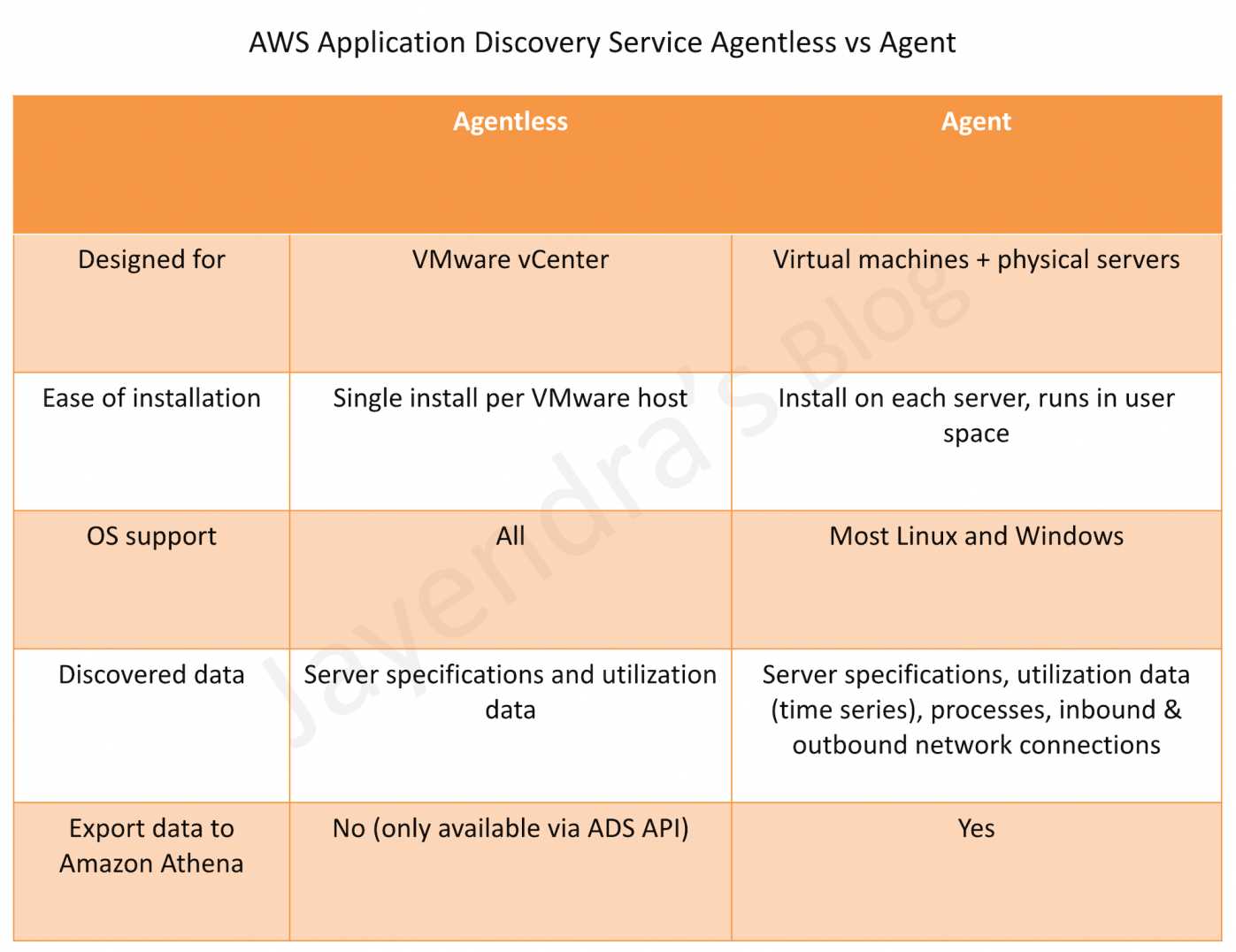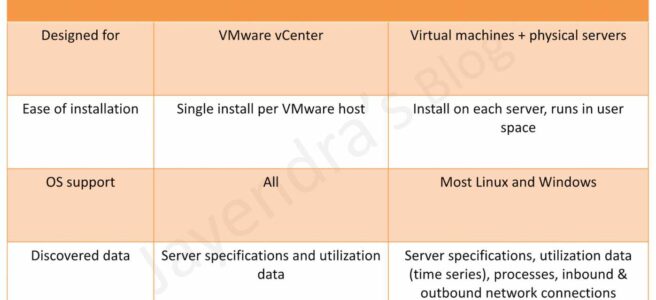AWS Application Discovery Service
- AWS Application Discovery Service helps plan migration to the AWS cloud by collecting usage and configuration data about the on-premises servers.
- helps enterprises obtain a snapshot of the current state of their data center servers by collecting server specification information, hardware configuration, performance data, details of running processes, and network connections
- is integrated with AWS Migration Hub,
- which simplifies migration tracking as it aggregates migration status information into a single console.
- can help view the discovered servers, group them into applications, and then track the migration status of each application.
- discovered data for all the regions is stored in the AWS Migration Hub home Region.
- The data can be exported for analysis in Microsoft Excel or AWS analysis tools such as Amazon Athena and Amazon QuickSight.
- supports both agent and agentless-based on-premises tooling, in addition to file-based import for performing discovery and collecting data about the on-premises servers.
Application Discovery Service Modes
Agentless discovery
- is an on-premises application that collects information through agentless methods.
- can be performed by deploying the Agentless Collector (OVA file) through the VMware vCenter.
- After Agentless Collector is configured,
- it identifies VMs and hosts associated with vCenter.
- collects the following static configuration data: Server hostnames, IP addresses, MAC addresses, and disk resource allocations.
- Additionally, it collects the utilization data for each VM and computes average and peak utilization for metrics such as CPU, RAM, and Disk I/O.
Agent-based discovery
- can be performed by deploying the Application Discovery Agent on each of the VMs and physical servers.
- supports most Windows and Linux operating systems.
- can be deployed on physical on-premises servers, EC2 instances, and virtual machines.
- collects static configuration data, detailed time-series system-performance information, inbound and outbound network connections, and processes that are running.
- pings the Discovery Service at 15-minute intervals for configuration information.
- transmits data securely to the Discovery Service using TLS encryption.

AWS Certification Exam Practice Questions
- Questions are collected from Internet and the answers are marked as per my knowledge and understanding (which might differ with yours).
- AWS services are updated everyday and both the answers and questions might be outdated soon, so research accordingly.
- AWS exam questions are not updated to keep up the pace with AWS updates, so even if the underlying feature has changed the question might not be updated
- Open to further feedback, discussion and correction.
- A company is migrating its on-premises systems to AWS. The user environment consists of the following systems:
• Windows and Linux virtual machines running on VMware.
• Physical servers running Red Hat Enterprise Linux.
The company wants to be able to perform the following steps before migrating to AWS:
• Identify dependencies between on-premises systems.
• Group systems together into applications to build migration plans.
How can these requirements be met?- Install the AWS Systems Manager Discovery Agent on each of the on-premises systems.
- Install the AWS Application Discovery Service Discovery Agent on each of the on-premises systems.
- Install the AWS Application Discovery Service Discovery Connector on each of the on-premises systems and in VMware vCenter.
- Install the AWS Application Discovery Service Discovery Agent on the physical on-premises servers. Install the AWS Application Discovery Service Discovery Connector in VMware vCenter.
